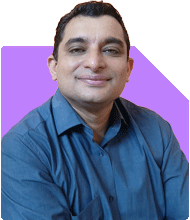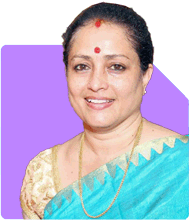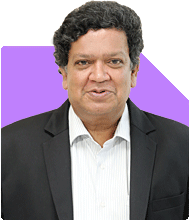I am 33 yrs old. Have an emergency fund of 11 lac in FD.
Mutual fund SIP of rs 8500/month of which accumulated till date 8 lac.
Stock investment of 5.5 lac. Home loan emi of 25k/month with outstanding principal of 12 lac.
Term plan cover of 75 lac - premium around 10500 per annum. Health ins cover of 25 lac - premium 7k per annum.
My income is 1.5 lac per month.
I'm unmarried with no plans of marrying in future and want to retire by 40 or 45.
I have parents and our monthly expenses are around 40k per month. Please suggest suitable plan accordingly. Thanks!
Ans: You are doing very well. At 33 years with Rs.1.5 lakh income, no family dependency, and such a clear vision of early retirement by 40 or 45—your current financial setup is impressive. You already have a good start across emergency fund, SIPs, equity, insurance, and loan management. Let’s now structure your plan for early retirement with a 360-degree approach.
? Set a Clear Retirement Timeline and Income Goal
– Decide between retiring at 40 or 45.
– Your planning will differ for each.
– Count 50–55 years of life after retirement.
– Decide the income you want post-retirement.
– Include basic living, travel, hobbies, and inflation.
– Adjust for parental dependency, health cost, and inflation.
– The earlier the retirement, the higher the retirement corpus needed.
? Your Emergency Fund Is Strong
– Rs.11 lakh in FD is a big strength.
– It covers over 24 months of expenses.
– You can keep 3–6 months in a liquid fund.
– Balance amount can be reallocated towards short-term goals.
– FD returns are low and taxable.
– Parking everything in FD will slow your wealth-building.
– Don't reduce the core emergency amount though.
? Analyse and Optimise Monthly Surplus
– Income is Rs.1.5 lakh.
– Expenses are Rs.40,000.
– EMI is Rs.25,000.
– Balance left is around Rs.85,000.
– SIP is only Rs.8,500.
– Try to raise SIP to Rs.40,000 gradually.
– Increase in steps of Rs.5,000 every 3–4 months.
– The more you invest now, the earlier you retire.
– Use STP from FD if needed to increase SIP.
? Home Loan Repayment Strategy
– Rs.12 lakh outstanding with Rs.25,000 EMI.
– You can prepay without penalty.
– But don’t use entire FD to close loan.
– Loan interest may be around 8–9%.
– Your MF and equity returns can be higher over time.
– Better to continue EMI, but invest surplus wisely.
– You can make one lump-sum prepayment per year.
– That will reduce tenure, not hurt liquidity.
– Avoid emotional need to become debt-free quickly.
? SIPs Must Be Reviewed and Enhanced
– Rs.8,500 SIP is too low for your goal.
– Use actively managed mutual funds, not index funds.
– Index funds lack flexibility in stock selection.
– Active funds adjust to market risks better.
– They give professional support during ups and downs.
– Use a mix of large-cap, flexi-cap, and mid-cap funds.
– All should be through regular plans via CFP-guided MFD.
– Direct funds may appear cheap, but lack guidance.
– Direct route gives no review, correction, or monitoring.
– Regular plans give hand-holding till retirement goal.
? Stock Investment Should Be Monitored Separately
– Rs.5.5 lakh in direct stocks is good.
– But don’t treat it same as mutual fund corpus.
– Stocks have higher volatility and need deeper attention.
– If you’re confident, continue managing your portfolio.
– Otherwise, shift some stocks into mutual funds.
– Don't let emotional stock holdings affect retirement goal.
– Retirement corpus should not depend on luck-based stock return.
? Insurance Cover Is Adequate for Now
– Rs.75 lakh term cover is fair.
– But if corpus grows, you may need Rs.1 crore cover.
– Reassess your cover once your wealth crosses Rs.1 crore.
– Premium of Rs.10,500 is reasonable.
– Don’t let it lapse ever.
– Health cover of Rs.25 lakh is also excellent.
– Rs.7,000 premium is quite efficient.
– Ensure coverage includes parents if dependent.
– Reassess family floater plans as they age.
? Retirement Goal Needs Dedicated Corpus
– Retirement by 40–45 means no active income later.
– You must build corpus to last 40–45 years.
– Target a monthly income of Rs.60,000–80,000 post-retirement.
– Inflation will multiply that in 10–15 years.
– You need a strong mutual fund retirement portfolio.
– SIP should be directed fully to this goal.
– Use equity mutual funds with minimum 7–10 years horizon.
– Don’t touch this portfolio till retirement.
– Use goal-based folios to track it separately.
? Avoid Real Estate as Retirement Asset
– Real estate is not liquid.
– You can’t sell a piece in emergency.
– Also, it gives no monthly income.
– Renting property is not guaranteed income.
– Maintenance and taxes reduce rental returns.
– Focus on mutual funds for compounding and flexibility.
– Mutual fund units can be sold partially when needed.
– Choose growth over illusion of fixed asset.
? Use Goal-Based Mutual Fund Allocation
– Retirement goal: High equity, long-term, active funds.
– Short-term needs: Use hybrid or short-term debt funds.
– Avoid using index funds for retirement.
– Index funds track market blindly.
– They can’t remove underperforming stocks.
– Active funds are managed with risk control.
– They protect and grow your wealth better.
– Use regular funds via CFP-linked MFD.
– Get yearly reviews, fund switches, and risk alignment.
? Tax Planning to Preserve Gains
– Post-retirement, income will come from MFs.
– Equity MF gains up to Rs.1.25 lakh are tax-free.
– Above that, LTCG taxed at 12.5%.
– STCG taxed at 20%.
– Debt fund gains are taxed as per your slab.
– Plan redemptions smartly to manage taxes.
– SIPs help in averaging and reduce short-term gain risk.
– Keep fund holding above 1 year to avoid STCG.
? Track and Adjust Yearly
– Every year, review your goal progress.
– Match it with inflation-adjusted target.
– Switch funds if underperforming.
– Don’t continue with 3-year poor performance.
– Rebalance equity and debt if needed.
– Get help from a Certified Financial Planner for this.
– They’ll help with personalised adjustments and risk control.
? Use Salary Hikes to Increase Investments
– Each increment should raise SIP by 10–20%.
– Don’t raise lifestyle in same ratio.
– Lock in future raises into your retirement fund.
– Keep expenses stable till goal is reached.
– Financial independence will come sooner this way.
? Avoid Lifestyle Drift Till Goal
– Your monthly surplus is strong.
– But rising lifestyle will eat that surplus.
– Avoid buying gadgets, trips, or cars that affect SIP.
– Delayed luxury will give early retirement.
– Think long term over monthly thrill.
? Don’t Mix Emergency Fund with Retirement Goal
– Keep Rs.5–6 lakh fixed as core emergency buffer.
– Balance can be in liquid funds or ultra-short funds.
– Don’t invest this in equity or retirement SIP.
– This should stay untouched.
? Finally
– You’re in a rare, strong position at 33.
– You’ve clarity, savings, insurance, and discipline.
– Only key missing piece is accelerated SIP.
– Raise SIP step by step with every surplus.
– Don’t break FD fully, shift in part to MFs.
– Continue home loan with annual prepayment.
– Stick to active, regular mutual funds only.
– Avoid direct funds and index funds.
– Build retirement portfolio goal-based and track yearly.
– Focus on liquidity, growth, and tax-efficient income.
– Use every salary hike to grow wealth, not lifestyle.
– Follow a 100% goal-linked investment approach.
– With this plan, retiring at 40–45 is highly possible.
Best Regards,
K. Ramalingam, MBA, CFP,
Chief Financial Planner,
www.holisticinvestment.in
https://www.youtube.com/@HolisticInvestment



























